We currently reside in an era where technological advancements have enabled us to streamline our music production setups. With just a laptop, mini controller, and microphone, we can effortlessly create an entire album. This innovation has transformed the concept of carrying a recording studio in our backpacks into a reality.
However, the question arises as to why manufacturers continue to produce bulky, non-portable, and costly workstations. Who exactly utilizes these devices?
The answer lies with “serious musicians.” These individuals prioritize their craft and seek to eliminate any potential distractions. They opt for a robust, standalone instrument – similar to a pianist performing on a grand piano.
Top pick
Yamaha PSRSX900
The built-in Vocoder and Vocal harmony engine make it a valuable tool for songwriters.
Best value
Yamaha MODX8+
The keyboard boasts two impressive features: the Superknob and Motion Sequence Technology.
Although it may appear as a regression, the constraints of these workstations promote a more concentrated and uninterrupted performance, particularly during live shows. Furthermore, dedicated piano players who dedicate hours to practice each day value the presence of a potent yet independent instrument to hone their skills.
Best Keyboard Workstations Reviews
1. Yamaha PSRSX900 Arranger Workstation keyboard
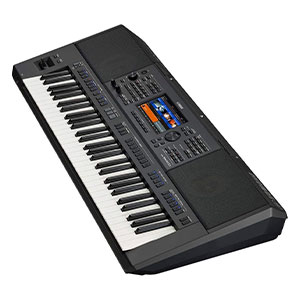
The PSRSX900 is a compact 61-note arranger keyboard that stands out from the rest. While you may think that any keyboard with a sequencer can arrange music, this one takes it to another level by focusing on creating complete song structures.
With its built-in speakers, it caters more towards songwriters rather than live performers. However, don’t mistake it for a beginner’s keyboard. It boasts impressive professional specifications.
Firstly, it comes loaded with a vast library of over 1000 presets from the renowned Yamaha Genos keyboard. Additionally, it offers more than 400 effects, including Master Compression, making it a versatile machine capable of full mixdowns.
One standout feature is its exceptional vocal processing capabilities. The built-in Vocoder and Vocal harmony engine make it a valuable tool for songwriters.
Another interesting feature is the MP3 Lyric display on the screen, which is quite unique. While some may consider it gimmicky, it can be incredibly useful for live cover performances.
Overall, Yamaha has done an excellent job with this keyboard, understanding the needs of their customers and delivering a professional product.
If I were to find a flaw, I would say that the design could be improved. Despite the convenience of the built-in speakers, the PSRSX900 appears somewhat outdated and lacks a modern touch.
2. Korg Nautilus 88 Workstation keyboard

The Korg Nautilus enhances the already impressive KRONOS line of workstations by incorporating nine synth engines into a single instrument. Notably, it offers remarkable emulations of iconic Korg vintage analogs like the Polysix, MS-20, and the esteemed digital M1.
A standout feature of the Nautilus is its onboard electric pianos. Upon closer examination, I discovered that it includes an updated version of the EP-1 from the Kronos, along with Korg’s organ emulation of their CX-3 from the late 70s.
I appreciate when a company replicates its own keyboards, as it often results in a more accurate capture due to proprietary schematics, similar to Universal Audio’s approach with their LA-2A and 1176 compressors.
Another exceptional aspect is the 88-key keyboard’s feel, featuring Korg’s RH-3 real hammer action, comparable to Roland’s PHA 50 hammer-weighted keyboard.
Regrettably, I found the factory piano sounds to be lacking, appearing somewhat thin and one-dimensional. Perhaps this is due to recording in a dry environment, resulting in less realism compared to other workstations and premium libraries like Spitfire Audio’s Hans Zimmer Piano.
Despite this drawback, the Nautilus offers excellent electric pianos, along with a 60GB SSD for sample storage, over 2500 presets, 197 effects, and 5 vintage-style filters, ensuring a comprehensive and high-quality musical experience.
3. Yamaha MODX8+ 88-Key Synthesizer Workstation keyboard
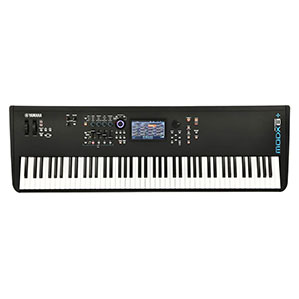
The Yamaha Montage series is quite popular among musicians who perform live. It is frequently seen on stage during SNL and concerts by renowned artists.
The MODX8+ serves as a simplified version of the Montage. While it may lack the multitude of knobs and buttons on the front panel, it still boasts numerous impressive features.
Featuring a larger screen, the MODX8+ is ideal for workstations. Additionally, its increased surface area can be useful for setting up a laptop or a series of pedals during live shows.
When it comes to an 88-key controller, the key action is crucial. Yamaha’s unique GHS Hammer Action Effect effectively replicates the weight distribution of keys on a grand piano. The lower keys are heavier than the upper keys, providing a realistic piano-like resistance.
In addition to its exceptional sound library, the FM synthesizer is a standout feature. Yamaha has incorporated some of the legacy of their DX7 into this model.
The keyboard boasts two impressive features: the Superknob and Motion Sequence Technology. The Superknob allows for the control of multiple synth settings with a single knob, while the Motion Sequence Technology generates rhythmic patterns akin to a bionic LFO.
For live performances, the 256-voice polyphony and 4-part switching capabilities are highly beneficial. This allows for seamless transitions between songs without any interruptions.
One drawback I encountered was the unbalanced outputs. While this may be due to its focus on live use, it does seem like a slight downgrade in quality.
4. AKAI Professional MPC Key 61 Keyboard Workstations
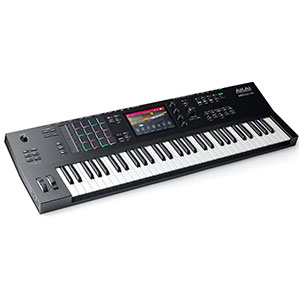
This keyboard embodies exactly what its name suggests. It essentially combines the functionality of an MPC Live standalone unit with that of a controller.
Unlike some of the other keyboards mentioned, the MPC Key features a 61-note semi-weighted keyboard instead of a full piano-like feel. This design choice makes sense considering that the main focus of this keyboard is the 16th note MPC pad matrix, with the keys serving to add overdubs and potentially perform.
In my opinion, the inclusion of a standalone MPC sequencer, an 8-track audio recorder, pads, and a keyboard already makes this unit highly valuable.
One particularly delightful feature is the addition of 8 CV/Gate outputs for modular and vintage gear. This is an impressive addition, especially considering that it is a feature inherited from their flagship MPC X. No compromises were made in this regard.
Storage capacity is always crucial for MPC users, and the fact that you can add your own SSD in addition to the generous 16GB flash memory is truly awesome. Personally, I have a vast library of samples totaling 42GB, so this feature is absolutely essential. This is especially true since this unit supports 32-bit/96K samples, which can quickly consume your memory.
Another feature that I absolutely love is the inclusion of Ableton Link support. This forward-thinking addition is truly impressive, especially for a standalone keyboard. I am aware that the MPC Live II also has this feature, but to have it on a keyboard is remarkable.
The only downside I found was the absence of sliders. While it does have a touch strip, it would have been amazing to have physical sliders for hands-on control of volumes and parameters. Perhaps this can be addressed in the next edition of the keyboard.
5. Roland JUNO-DS 61-Key Lightweight Synth-Action Keyboard

The JUNO-DS sets itself apart from its vintage synth counterparts, such as the Juno 106, 60, and 6, despite sharing the same brand name. Roland has a tendency to use the Jupiter and Juno names in this manner, which can be frustrating as one might anticipate an analog synth revival.
In contrast, the JUNO-DS takes after the XV line and offers a fascinating feature where you can conveniently upload 1,000 free EXP library sounds from Roland’s website via USB. I still possess my XV synths, and those EXP libraries were quite expensive back in the day!
Unlike the XV88, the JUNO boasts 61 semi-weighted keys.
One of the synth’s standout features is the phrase pad section, which I found to be incredibly enjoyable and entertaining. It bears resemblance to the original SP-808 and newer SP-404mkII, combining the qualities of an MPC with Ableton clip triggering.
The JUNO-DS synth excels in its ability to process vocals, making it a strong contender among other high-end workstations. It includes a top-notch microphone input with an impressive vocoder, auto-pitch, and reverb. The Roland VP330 has always been hailed as the best vocoder ever created, and even their Boutique VP03 is remarkable. This vocoder lives up to expectations.
While the synth does feature 4 knobs and 4 additional sliders for parameter adjustments, I was slightly disappointed that they did not reintroduce their D-Beam technology. Both the SP808 and XV88, which share significant similarities with this synth, possess this innovative technology. It was truly ahead of its time and would have been a perfect addition.
Final Word
I have a deep understanding of Computer Fatigue Syndrome (CFT). Throughout my professional journey, I have always prioritized investing in the most advanced computer audio system. Nevertheless, there have been instances where I needed to take a break from the constant sitting and screen-staring while engaging in writing or recording activities.
In the past, I was the sole individual I knew who possessed the Roland VS1680 along with an extensive Protools setup. Despite facing ridicule from producers, I found solace in the standalone recording method. It provided a sense of authenticity, akin to using a traditional tape machine or musical instrument. This might explain the enduring appeal of MPCs and Elektron boxes; sometimes, a different approach is necessary.
I believe workstations serve this purpose exceptionally well. Without their robust connectivity, I would dismiss them entirely. However, the ability to create without enduring lengthy loading times is truly motivating.
Moreover, workstations are reliable and durable. I have yet to encounter a workstation crashing and causing the loss of an entire album’s worth of material due to lack of backup.
If you have the financial means and ample space in your studio, incorporating a workstation will undoubtedly prove to be a worthwhile decision.

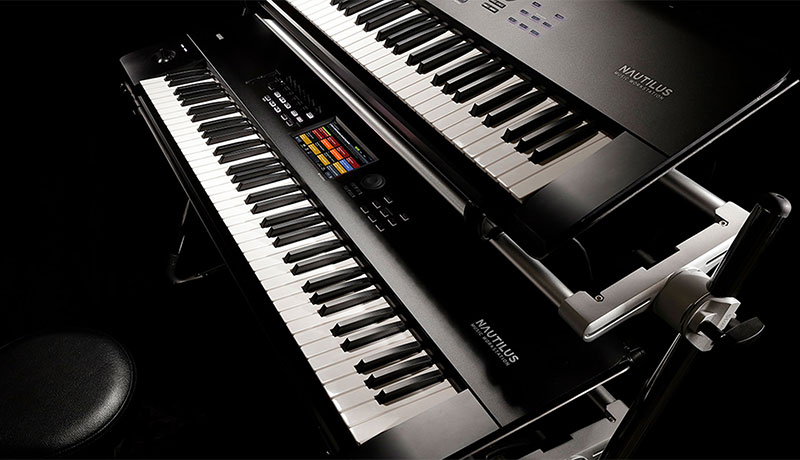
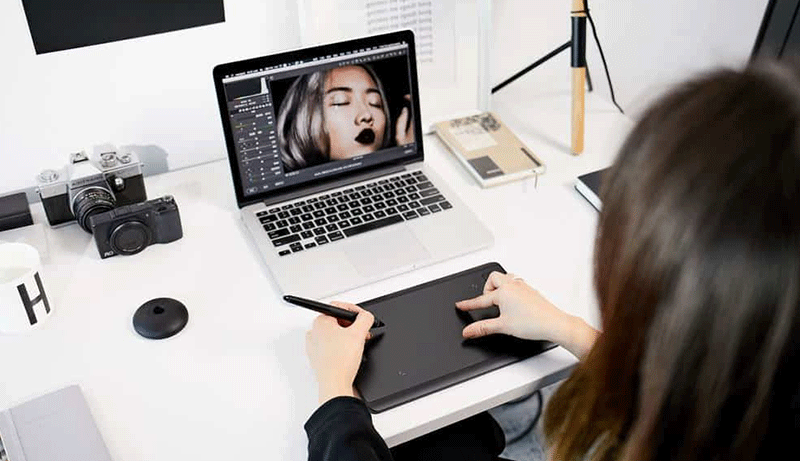


Leave a Reply